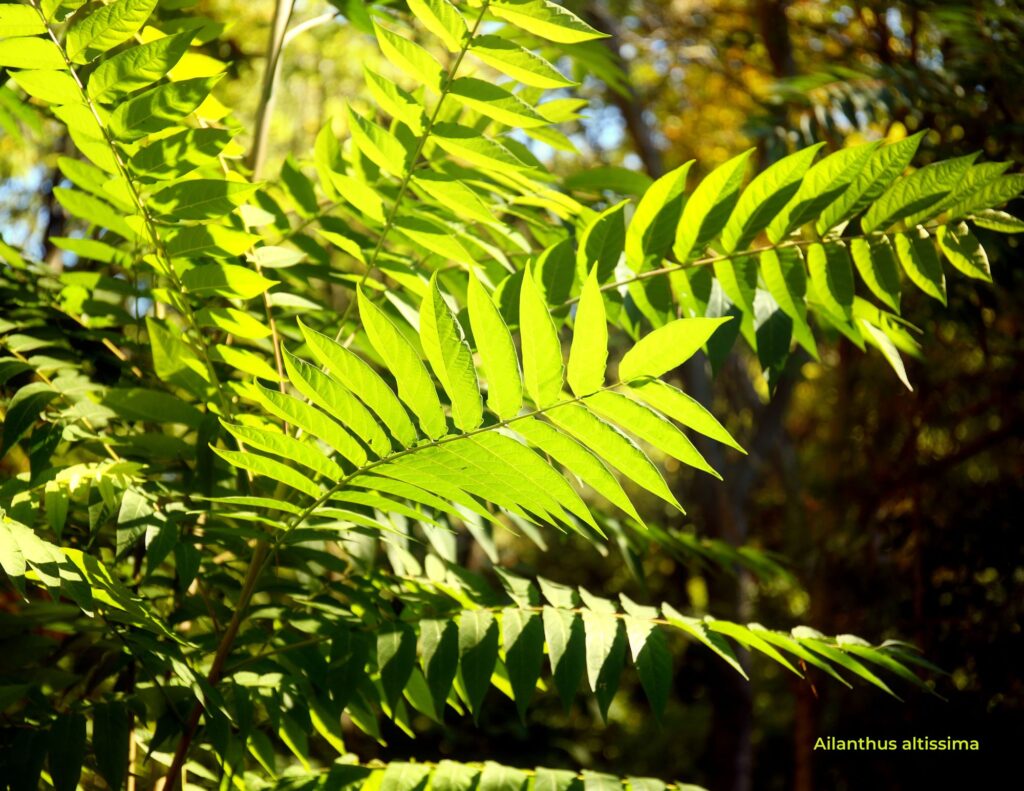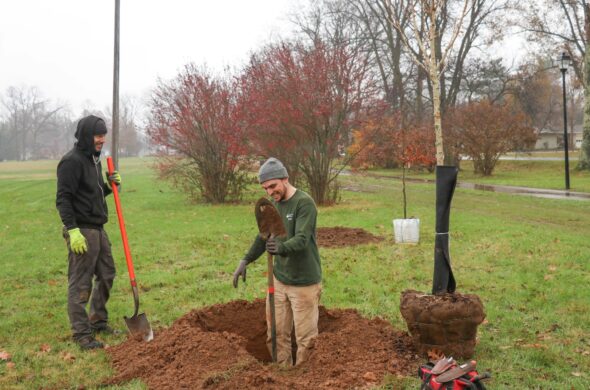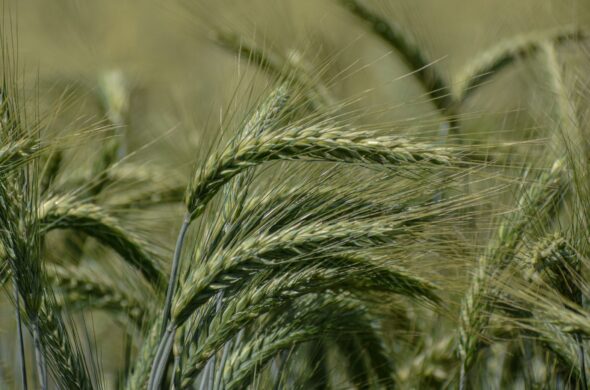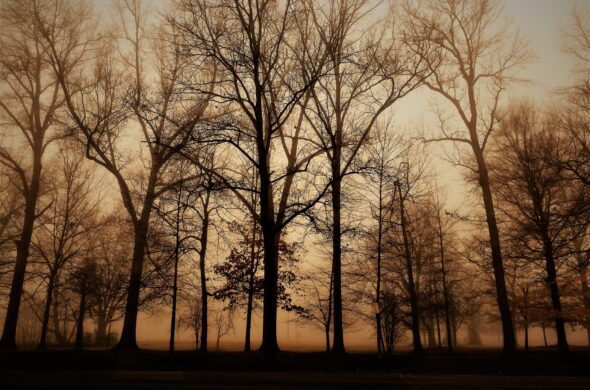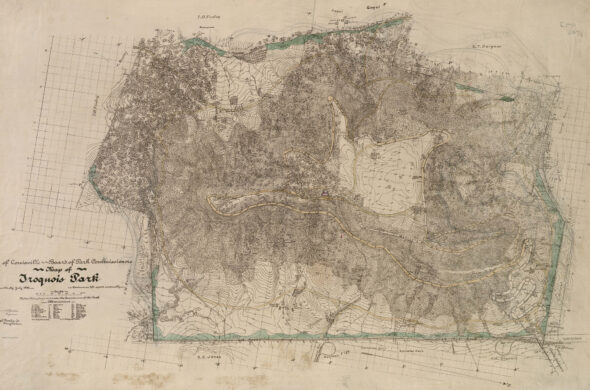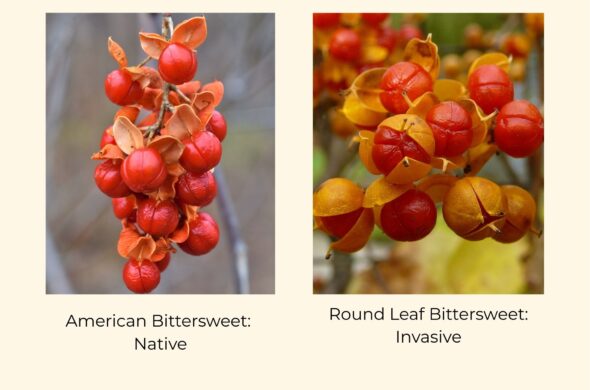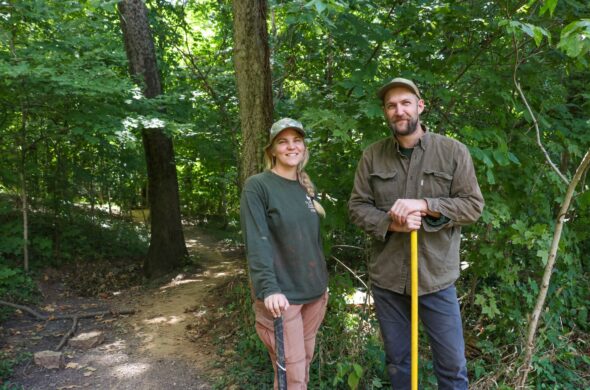An invasive insect may put your favorite local wine in jeopardy, but our Team for Healthy Parks is on the case! The Spotted Lanternfly has major potential to damage American grape crops, and orchard and vineyard owners are on high alert. It hasn’t been seen yet in the Louisville area, but known infestations are just about an hour east from us in Switzerland County, Indiana – home of the Swiss Wine Festival.
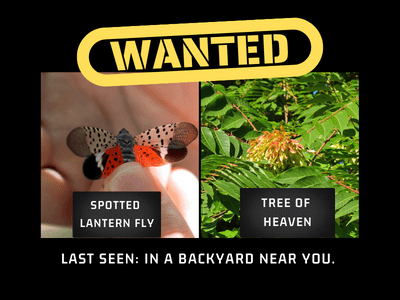
Your next question may be, “If we aren’t seeing the invasive insect yet, how is the Team preparing?”. We are glad you asked! That is where our efforts to remove invasive Tree of Heaven (Ailanthus altissima) come into play! Tree of Heaven is the preferred host plant for the Spotted Lanternfly (SLF), therefore removing one invasive can help slow the spread of another. However, SLF will also feed on native trees, such as maples and oaks, as they establish in an area. Their voracious appetite is accompanied by their unpleasant excretion that causes the growth of a fungus called sooty mold. The fungus stresses the plant and leaves it vulnerable to diseases and additional pests. Fortunately, the Conservancy has been working to control Tree of Heaven long before the SLF was reported in Pennsylvania in 2014.
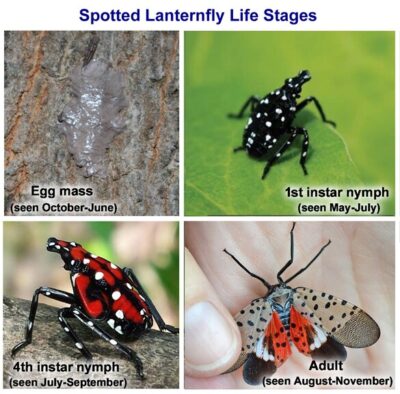
Tree of Heaven does have some native lookalikes, such as walnuts and sumacs, but if you follow your nose, you shouldn’t go astray! With another common name for this tree being “stinking sumac”, you could guess it does not quite smell like roses. Simply crumple some leaves and if you start to smell rancid peanut butter, you have a Tree of Heaven! If you would rather just look at the leaves, you will see the leaf of Tree of Heaven has a smooth margin with two notches at the end, often described like an arrowhead in shape. The native lookalikes in question also have pinnate leaves, but the individual leaves have margins that are toothed or serrated. The winged seeds, or samaras, on the Tree of Heaven can also be helpful in identification. These seeds are also known as helicopter seeds, where each mature canopy tree can disperse over 300,000 seeds to the wind each year!
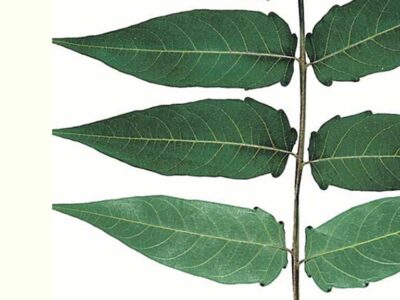
To aid in our management of Tree of Heaven, our Team for Healthy Parks adds a location record of each tree we find into our Georgraphic Information System (GIS) maps. These data points are then reviewed in the fall when the proper treatment window opens. When treated during this time, the targeted dose of herbicide can make its way into the roots. If treated in the spring or summer, the tree will attempt to flush out the herbicide by sending out numerous root sprouts and creating dense colonies.
Natural areas management can be nuanced, but the work is always worth it! When we make Louisville’s natural areas less attractive to Spotted Lanternfly, we can help reduce populations that might infest our favorite wineries and orchards. It just goes to show how our work has benefits beyond the parks. The next time you sit down to a glass of local wine, make a toast to our Team for Healthy Parks!
Find something similar: News
